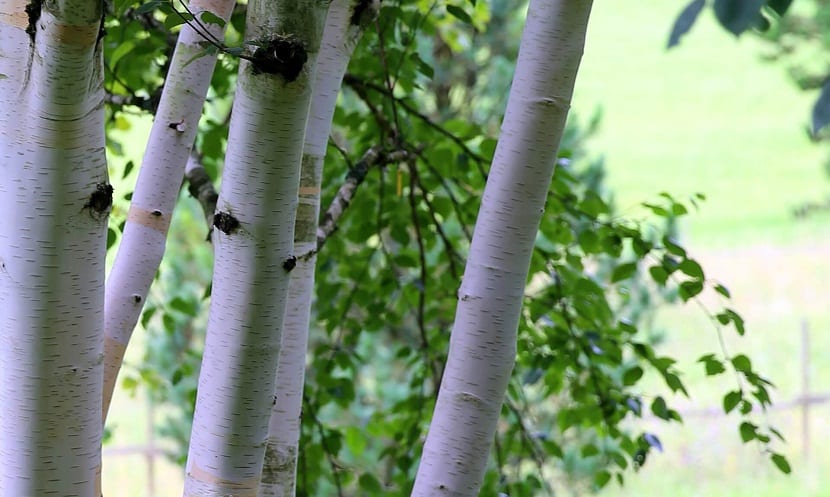
El Himalayan birch scientific name Betula utilis var. jacquemontii and a member of the Betulácea family, it is originally from the Himalayan region, which is found on the Asian continent.
It is found in the territories of Afghanistan, Kashmir, Nepal, Bhutan and western China. Also can be seen in extensive places and gardens from United Kingdom.
Characteristics of the Himalayan Birch

This white bark ornamental tree and shiny it is very resistant to cold.
It develops in climates with low temperatures and regions that reach up to 4.500 meters in height. During the freezing season, its roots are covered with snow and when grown in a suitable environment (sandy, moist, silicon-acid, permeable or deep soils), it can grow up to 20 meters, although it usually measures between 9 and 12 meters.
For its part, the leaves have a serrated edgeThey are slightly hairy, dark green and deciduous, that is, they change their color (bright yellow) at the beginning of autumn.
Specialists in the field, ensure that these have a high medicinal value like its sap; being used especially to treat ailments related to the kidney, heart and circulatory problems.
Its stem has the peculiarity of produce lichens in the shade.
It is a variety that is grown by cuttings (branches) of soft wood or grafts. Excess water during irrigation can harm itApart from that direct exposure to the sun should be avoided in hot weather.
It is not susceptible to pests. Blooms in spring and pruning is recommended (which is not frequent) in times of inactivity.
History about this tree
In 1820, the Danish botanist Nathaniel Wallich was the first to collect samples from the plant in Nepal.
Five years later and in 1825, the Scotsman David Don described its characteristics from the copies of his colleague Wallich. In return it would receive the designation with which it is known today (Betula utilis var. jacquemontii) and all thanks to the French Victor Jacquemont, who in 1831 received a free license from the Hindu Emperor Ranjit Singh Sikh of Kashmir to educate himself on the diversity of plant species that existed in the country. His love for nature would be worth the European such exception.
Uses
According to Celtic mythology, this type of Birch symbolizes evolution and purification, since formerly it was considered the "tree of wisdom".
It had several uses, the bark was used as parchment. The branches served as whips and with them brooms were made to clean the orchards. It was a tradition to plant three white-stemmed birches at the entrance of the home for good fortune and to guard against evil spirits.
An ornamental, useful and winter tree

This tree grows in cold outdoor environments and decorates with the contrast of colors (according to the annual seasons) the frozen eastern mountains.
An attractive trunk whose bark is carelessly peeled off as if gradually flaking off is its primary characteristic. It is a poem to see how the leaves sway upside down caressing the wind and which sleepy tears run out one after another, slowly aging in the thick of its branches.
Thanks to its strange beauty it is used a lot to decorate and like many of its kind, it offers incalculable benefits being a important renewable natural resource, since it purifies the air so that you can live in a healthy environment and reduces your energy consumption.
With wood you can practice recycling and turn it as if by magic into furniture or utensils for your home or office. It also greens the urban landscape that you have around you and guarantees the quality of life you deserve.
For that and more you must recognize the benefits of this green creation. It depends on your behavior that the planet where you live, the Earth, does not become extinct and with it the animal and plant species, living beings and you, who in the end interact with each ecosystem.
Hello. I tell you that all the concepts that you give us about plants, their usefulness, their origin, their climate, etc. are very useful. and the most important thing is that our children learn a lot about the biodiversity of these plants. Thank you from Honduras
Thanks for your words, Manuel.
We are happy to know that the children are also learning about plants 🙂
Kind regards.